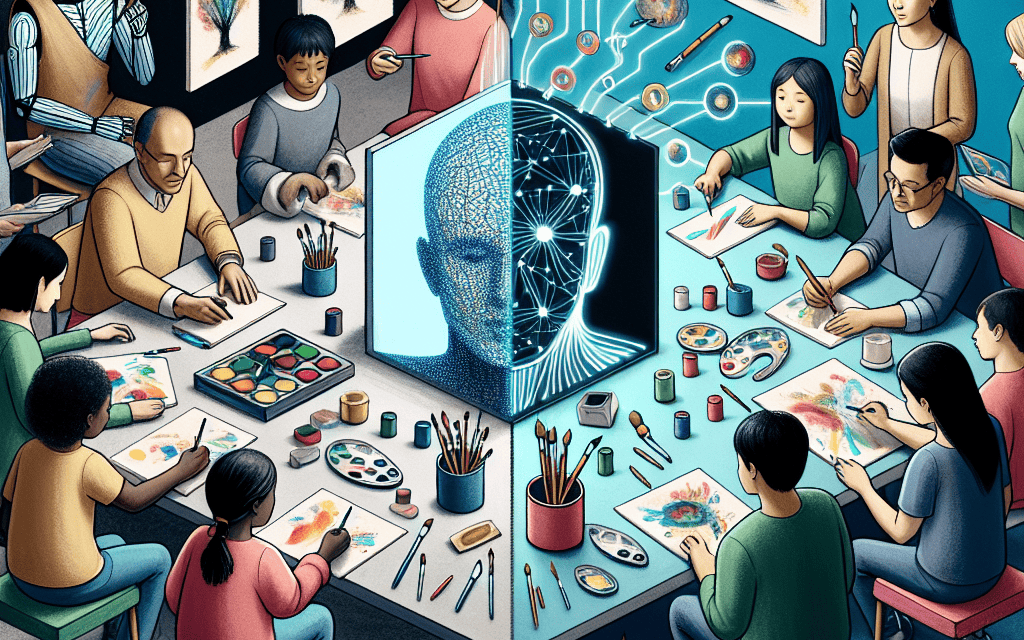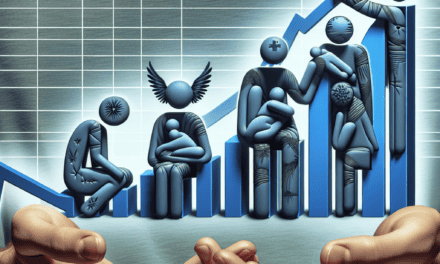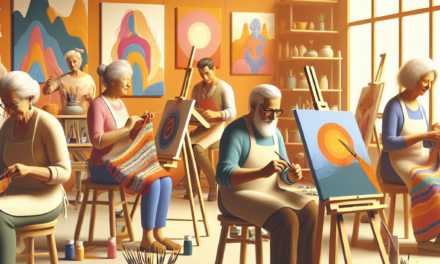The Impact of Creative AI on Art Therapy Practices
Art therapy has long been recognized as a powerful tool for healing and self-expression, allowing individuals to explore their emotions and experiences through creative processes. With the advent of artificial intelligence (AI), particularly in creative domains, the landscape of art therapy is undergoing a significant transformation. This article delves into the multifaceted impact of creative AI on art therapy practices, exploring its benefits, challenges, and future potential.
1. Understanding Art Therapy
Art therapy is a therapeutic practice that utilizes artistic expression as a means of communication and healing. It is grounded in the belief that creative expression can facilitate emotional release, self-discovery, and personal growth. Art therapists work with individuals of all ages, including children, adolescents, and adults, to help them navigate various psychological challenges.
Art therapy can take many forms, including drawing, painting, sculpture, and digital art. The process is often non-verbal, allowing clients to express feelings that may be difficult to articulate. The therapeutic relationship between the client and the therapist is crucial, as it fosters a safe environment for exploration and healing.
Key components of art therapy include:
- Creative Expression: Engaging in artistic activities to express emotions and thoughts.
- Therapeutic Relationship: Building trust and rapport between the therapist and client.
- Reflection: Analyzing and discussing the artwork to gain insights into the client’s emotional state.
- Personal Growth: Facilitating self-discovery and coping strategies through creative processes.
2. The Rise of Creative AI in the Arts
Creative AI refers to the use of artificial intelligence technologies to generate or assist in the creation of art. This can include visual art, music, literature, and more. The rise of creative AI has been fueled by advancements in machine learning, neural networks, and natural language processing, enabling machines to analyze and replicate human creativity.
Some notable examples of creative AI include:
- DeepArt: An AI program that transforms photographs into artworks in the style of famous artists.
- OpenAI’s DALL-E: A model that generates images from textual descriptions, showcasing the potential for imaginative visual creation.
- AIVA: An AI composer that creates original music, demonstrating the ability of machines to engage in musical creativity.
The integration of AI into the arts has sparked debates about authorship, creativity, and the role of technology in human expression. However, it also presents exciting opportunities for art therapy, as therapists can leverage these tools to enhance their practice.
3. Enhancing Therapeutic Processes with AI Tools
Creative AI can significantly enhance art therapy practices by providing therapists with innovative tools to facilitate client engagement and expression. Here are several ways AI tools can be integrated into art therapy:
3.1 Personalized Art Creation
AI can analyze a client’s preferences, emotional state, and artistic style to generate personalized art prompts or suggestions. For instance, an AI program could recommend specific colors, themes, or techniques based on the client’s previous artwork or emotional responses. This personalized approach can help clients feel more connected to their creative process and encourage deeper exploration of their emotions.
3.2 Virtual Reality (VR) and Augmented Reality (AR)
AI-powered VR and AR applications can create immersive environments for art therapy. Clients can engage in virtual art-making experiences that simulate real-world materials and settings. For example, a client struggling with anxiety might find solace in a calming virtual landscape where they can paint or sculpt without the constraints of physical materials. These technologies can also provide a safe space for clients to confront fears or traumas in a controlled environment.
3.3 Data Analysis for Progress Tracking
AI can assist therapists in tracking clients’ progress over time by analyzing their artwork and emotional expressions. By employing machine learning algorithms, therapists can identify patterns in a client’s artistic output, such as recurring themes or changes in color usage. This data-driven approach can provide valuable insights into a client’s emotional journey and inform treatment strategies.
3.4 Collaborative Art Creation
AI can facilitate collaborative art-making experiences between clients and therapists. For instance, an AI tool could generate a base image that the client can modify or build upon, fostering a sense of partnership in the creative process. This collaboration can enhance the therapeutic relationship and encourage clients to take ownership of their artistic expression.
3.5 Accessibility and Inclusivity
Creative AI tools can make art therapy more accessible to individuals with disabilities or those who may have difficulty with traditional art materials. For example, AI-driven applications can provide adaptive tools for individuals with motor impairments, allowing them to create art using voice commands or eye-tracking technology. This inclusivity can empower clients to engage in creative expression regardless of their physical limitations.
4. Challenges and Ethical Considerations
While the integration of creative AI into art therapy presents numerous benefits, it also raises important challenges and ethical considerations that must be addressed. These include:
4.1 Authenticity and Ownership
The use of AI in art creation raises questions about authenticity and ownership. When an AI generates artwork based on a client’s input, who owns the final product? This dilemma can complicate the therapeutic process, as clients may struggle with feelings of detachment from their creations. Therapists must navigate these discussions sensitively, ensuring clients feel a sense of agency in their artistic expression.
4.2 Dependence on Technology
As therapists incorporate AI tools into their practices, there is a risk of over-reliance on technology. While AI can enhance the therapeutic process, it should not replace the human connection that is central to art therapy. Therapists must strike a balance between utilizing AI tools and maintaining the personal, empathetic approach that defines effective therapy.
4.3 Data Privacy and Security
The use of AI in art therapy often involves collecting and analyzing sensitive client data. Therapists must prioritize data privacy and security, ensuring that clients’ information is protected and used ethically. Clear guidelines and consent processes should be established to address these concerns and build trust between clients and therapists.
4.4 Cultural Sensitivity
AI algorithms are often trained on datasets that may not reflect diverse cultural perspectives. This can lead to biases in the generated art or prompts, potentially alienating clients from different backgrounds. Therapists must be vigilant in selecting AI tools that are culturally sensitive and inclusive, ensuring that all clients feel represented and understood in their creative processes.
4.5 The Role of the Therapist
As AI tools become more prevalent in art therapy, the role of the therapist may evolve. Therapists will need to develop new skills to effectively integrate technology into their practice while maintaining their core competencies in empathy, communication, and artistic guidance. Ongoing training and professional development will be essential to ensure therapists are equipped to navigate this changing landscape.
5. Future Directions for Art Therapy and Creative AI
The future of art therapy in conjunction with creative AI holds immense potential for innovation and growth. As technology continues to advance, several key directions are likely to shape the field:
5.1 Integration of AI in Training Programs
As creative AI becomes more prevalent in art therapy, training programs for therapists will need to incorporate AI literacy. Future therapists should be equipped with the knowledge and skills to effectively use AI tools in their practice, understanding both the benefits and limitations of these technologies. This integration will ensure that therapists are prepared to navigate the evolving landscape of art therapy.
5.2 Research and Evidence-Based Practices
Ongoing research will be crucial in understanding the impact of creative AI on art therapy outcomes. Studies examining the effectiveness of AI tools in enhancing therapeutic processes, client engagement, and emotional well-being will provide valuable insights for practitioners. Evidence-based practices will help therapists make informed decisions about incorporating AI into their work.
5.3 Collaborative Projects Between Artists and Technologists
Collaborative projects between artists, technologists, and therapists can lead to the development of innovative AI tools tailored specifically for art therapy. By combining artistic vision with technological expertise, these collaborations can create resources that enhance the therapeutic experience and address the unique needs of clients.
5.4 Expanding Accessibility Through Technology
The continued advancement of AI technology has the potential to expand access to art therapy for underserved populations. Teletherapy platforms that incorporate AI tools can reach individuals in remote areas or those with limited access to traditional therapy. By breaking down geographical barriers, creative AI can democratize access to art therapy services.
5.5 Ethical Frameworks for AI in Therapy
As the use of AI in art therapy grows, the establishment of ethical frameworks will be essential. These frameworks should address issues of authenticity, ownership, data privacy, and cultural sensitivity, providing guidelines for therapists to navigate the complexities of integrating AI into their practice. By prioritizing ethical considerations, the field can ensure that the benefits of creative AI are realized while minimizing potential harms.
Conclusion
The impact of creative AI on art therapy practices is profound and multifaceted. As therapists embrace innovative tools and technologies, they can enhance the therapeutic process, foster deeper client engagement, and expand access to art therapy services. However, it is essential to navigate the challenges and ethical considerations that arise with the integration of AI into this deeply humanistic field.
By understanding the potential benefits and limitations of creative AI, therapists can harness its power to enrich their practice while maintaining the core values of empathy, authenticity, and connection that define effective art therapy. As we look to the future, the collaboration between art, technology, and therapy holds the promise of transforming the landscape of healing and self-expression for individuals around the world.




